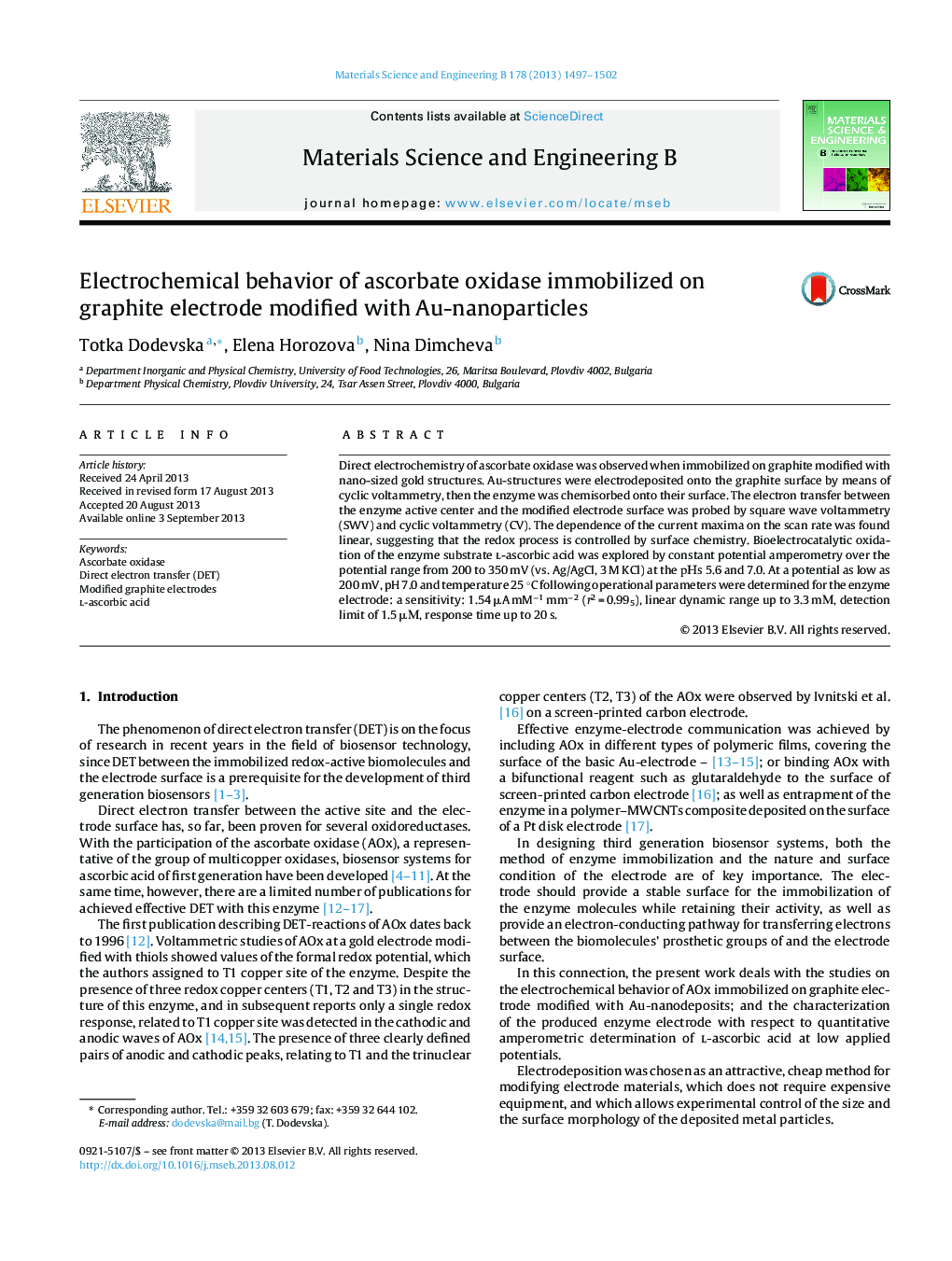| Article ID | Journal | Published Year | Pages | File Type |
|---|---|---|---|---|
| 10639867 | Materials Science and Engineering: B | 2013 | 6 Pages |
Abstract
Direct electrochemistry of ascorbate oxidase was observed when immobilized on graphite modified with nano-sized gold structures. Au-structures were electrodeposited onto the graphite surface by means of cyclic voltammetry, then the enzyme was chemisorbed onto their surface. The electron transfer between the enzyme active center and the modified electrode surface was probed by square wave voltammetry (SWV) and cyclic voltammetry (CV). The dependence of the current maxima on the scan rate was found linear, suggesting that the redox process is controlled by surface chemistry. Bioelectrocatalytic oxidation of the enzyme substrate l-ascorbic acid was explored by constant potential amperometry over the potential range from 200 to 350 mV (vs. Ag/AgCl, 3 M KCl) at the ÑÐs 5.6 and 7.0. At a potential as low as 200 mV, pH 7.0 and temperature 25 °C following operational parameters were determined for the enzyme electrode: a sensitivity: 1.54 μA mMâ1 mmâ2 (r2 = 0.995), linear dynamic range up to 3.3 mÐ, detection limit of 1.5 μÐ, response time up to 20 s.
Related Topics
Physical Sciences and Engineering
Materials Science
Electronic, Optical and Magnetic Materials
Authors
Totka Dodevska, Elena Horozova, Nina Dimcheva,
